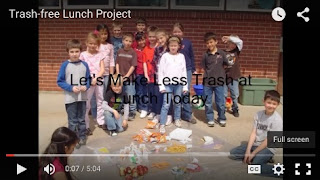Assessment has always been part of teaching and learning, but it now plays, perhaps, the biggest role ever. Evidence of learning does not have to always be pencil and paper, however. Some of the best measures of achievement are found in the informal observation of students. In a classroom of 20 or more children, though, it is difficult to observe every child at just the right moment. Fortunately, we also live in a time where technology is available to capture the evidence for us!
A quick word about technology. There are many different tools that can be used to achieve the results I will describe. New tools are constantly evolving as well. The actual video clips I will show you were created several years ago with a Flip Video camera (I don't believe you can even buy one today!), but I have since used iPads for the same results. As teachers, we are limited by the technology decisions made in our districts and the personal technology we can provide from home, but great ideas can be achieved regardless of the platform in which you work. For this assessment, you simply need a way for students to video one another. Perhaps you still have a small hand-held video camera, Surface tablets or iPads, a digital camera that records video, or even a smartphone! Any device will work! And remember, you don't have to be a master of the technology! The kids do, and probably already are!
Math assessments are often pencil and paper. The word "test" strikes fear in the hearts of some children. I found that I could assess even more effectively if I gave my kids a chance to demonstrate their understanding without realizing they were taking a test. As my second graders completed work, I paired them up, handed them a video device, and asked them to make a "how-to" video demonstrating a specific second grade math skill. They were to take turns filming each other in a demonstration that could be shared with others. There were two very valuable aspects to the assignment. First, the kids were totally engaged. Imagine being a child and being asked to work with a friend and use technology! Kids love to take pictures and video! Next, they were capturing a demonstration of their understanding that I would be able to watch later, providing a marvelous assessment!
Here are a couple of examples of the work completed by second graders:
My class took the demonstrations one more step that year, as we combined the best of our work into an interactive Youtube video! Although this step is not necessary for assessment, it is a wonderful way to make the student work authentic and provide a real world audience for the kids! If you are interested in trying this, simply go to Youtube and search for "how to annotate videos". (The annotations will not work on a mobile device, however. You will need to use a desktop or laptop computer to see the annotations.)
Although, this article was focused on math assessment, the same idea can be used for other content areas as well. Remember, learning and teaching are most visible when students take charge and become the teachers. If students can share learning with others they have truly learned!







